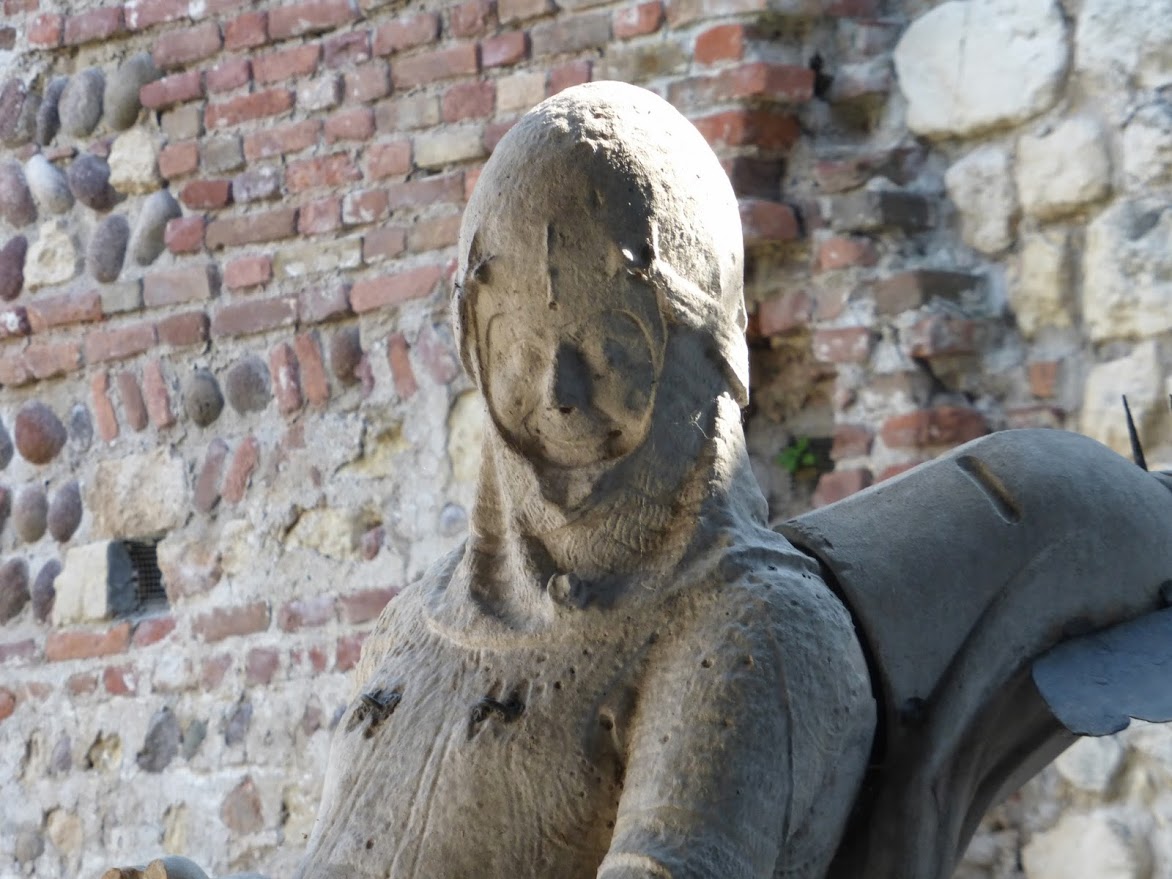
In previous chapters I described in some detail the concept of search activity (developed only 35 years ago and so still regarded by the scientific community as novel and original). According to this concept, active behaviour in conditions of uncertainty (search behaviour) is the most important factor in somatic health, prevents the development of psychosomatic illnesses and increases the organism’s resistance to stress. Renunciation of search, on the contrary, is a non-specific and universal precondition for the development of many different kinds of pathology.
Can it be said, though, that search activity is beneficial always and under all circumstances? If we mean physical health, the answer is an unequivocal yes: it doesn’t matter to our organism where we direct our search activity and what its consequences are for our social environment. However, for our social milieu, that is for the people we live amongst, it really does matter. Search activity may manifest itself in creative activity, in a struggle for noble ideals, in altruistic behaviour, or even in an effort to overcome our own weaknesses and negative tendencies. In all such cases search not only has a very strong positive effect on health but it is also highly beneficial for the moral climate of a small or large group. I remember being green with envy as I read about the psychological atmosphere in the “Nils Bohr school”, so well described by Soviet writer Daniil Danin. My envy was provoked by the atmosphere of scientific search and mutual support in the process of this search. In a psychological climate of this kind the best human characteristics are fostered and strengthened.
Unfortunately, however, this is far from the only and maybe even quite a rare example of the way search behaviour can be acted out. Active behaviour in conditions of uncertainty can just as easily be destructive, aimed at achieving not simply selfish, but even dubious and dangerous ends. In this case, it does not lose its positive effect on the physical health of an individual inclined to such behaviour, but it does have a deeply negative impact on the moral health of society as a whole.
About 15 years ago I was involved in a discussion with Günther Ammon, a leading German psychiatrist and thinker, who founded the Dynamic Psychiatry movement. Ammon developed the theory of two types of aggressiveness: destructive (this type of aggressiveness has been described in detail by classical psychoanalysis) and so-called constructive aggressiveness. Under the latter term Ammon understood, essentially, what I have called search behaviour, only with a plus sign: it embraces active and useful transformation of the world, creativity, openness to new things and so on. Unfortunately, the very concept of aggressiveness has too negative a reputation and even the modifier “constructive” cannot change this reputation. For this reason I prefer the term “search behaviour”, the more so since the term is underpinned both by explanations of the mechanisms of the impact of behaviour on health and by serious philosophical ideas. However, search behaviour does not differentiate between constructive and destructive behaviour, something that is most desirable for an analysis of its social consequences.
Anyway, let’s get back to my discussions with Ammon. As an outstanding humanist, Ammon ascribed a high moral value to constructive aggressiveness and considered that this type of aggressiveness predominated in healthy, creatively oriented people, while destructive aggressiveness was characteristic of asocial psychopaths (individuals without formed social aims) and those suffering from psychosomatic illnesses. Ammon suggested that in the case of psychosomatic illness, the destructive aggressiveness was directed not against society but against the person himself. Basing my approach on the concept of search activity, I countered that people who suffer from psychosomatic illnesses were characterised by a low level of both constructive and destructive aggressiveness alike. Research undertaken at Ammon’s school confirmed my point of view: psychopaths, depending on the level of aggressiveness (mainly destructive, but partially with some constructive elements included) turned out to be the opposite of the psychosomatically ill, among whom both types of aggressiveness were close to zero, at least during acute phases of their illness. Ammon described this phenomenon as an aggressiveness deficit, while I prefer to speak of lowered search activity, regardless of its direction. Two important conclusions came out of this research. First, search activity can be destructive and a danger to society. Second, even in this case it retains its protective influence on a person’s health.
Moving on from clinical research to everyday experience, every reader will be able to cite examples of ‘dangerous’, destructive search behaviour. At the beginning of this chapter I quoted as a model the creative atmosphere in Nils Bohr’s laboratory during the 1930’s. Regrettably, many scientists, and not just those who emigrated from the USSR, can recall the direct opposite – the many scientific laboratories with a destructive psychological climate. I became interested in this and carried out not so much a scientific study as some private detective sleuthing, interviewing researchers who had worked in such institutions. I found that they all had in common one and the same behaviour dynamic in the laboratory head. Starting out as an active and enterprising individual, with an intense need for success and often with a certain level of creative ability, this leader would, as he moved up the administrative ladder, become less and less interested in science and generally the object for which the laboratory had been set up, and more and more involved in competitive relationships with other laboratory heads. Constructive search behaviour stopped, faded away (the general Soviet social rule that “all initiative will be punished” helped here, too). But the intense need for search as such was preserved, the organism demanded its satisfaction, the organism threatened malfunction and breakdown in health in the case of renunciation of search. Meanwhile, creative activity was no longer so attractive, the scientist had lost his rhythm and lost touch with the latest developments during the time he spent building and consolidating his career. That left only one real way to realise search behaviour: behind the scenes struggle, intrigue and mutual backstabbing. When you observe the passion with which a once-respected scientist embroils himself in a petty struggle for entirely unworthy purposes, you begin to wonder seriously whether people are moved by purely rational (even if extremely selfish and amoral, but still rational) motives. The suspicion grows whether what pushes him out along this path might not be some kind of biological motivation, something which needs instant satisfaction. I suggest that this is a need for search behaviour which has taken on extreme anti-social forms. It cannot be excluded that in the depths of his subconscious such a boss senses the demeaning nature of his behaviour, but his organism imperiously commands activity. Any other form of activity is impossible by this time, and his latent dissatisfaction with himself, through a mechanism of psychological defence, is transformed into hatred and aggressiveness towards others and especially those of his subordinates who have not yet lost the capacity for constructive search activity, for scientific creativity. It is astonishing how consistently such bosses begin to persecute the most talented of their researchers, those who are responsible for the quality and competitiveness of their own laboratories. It leads to a paradoxical situation: the laboratory head can still find a common language and reach agreement with his real competitors, careerists just like him, but he cannot reconcile himself to the existence in his own team of a talented researcher who raises the reputation of his laboratory.
The psychoanalytical mechanism behind this has an explanation: the researcher becomes a permanent reproach to the boss, who has been unable to expunge entirely from his subconscious either his memories of the happiness brought by genuinely creative activity or an adequate evaluation of such activity. And so the existence of a person who is capable of constructive search lowers the boss’s self-esteem and provokes an inferiority complex. As a result, all the destructive aggressiveness, all the unrealised reserve of search activity is directed against the people who would be capable of restoring the creative climate in the team, and the team falls into a state of stagnation. I am familiar with this dynamic mainly in scientific teams, but it is characteristic, unfortunately, also for other groups and whole social systems. In Olga Forsh’s novel Clothed In Stone, one of the characters says that after killing the artist inside himself, he is turning to evil. I would suggest this applies not just to an artist: a person who extinguishes the creative spark within can easily turn to evil, because the need for search will, like a blocked stream, find another outlet and wash away moral values in the process. Inappropriately directed search represents a powerful destructive force, since it is closely connected with the need for self-preservation.
The concept of search activity throws new light on the old problem of aggressiveness in young people. For a long time it was held, and indeed still is by many, that aggressiveness is an integral biological characteristic of youth and, consequently, there is little use in fighting it. Some facts, however, cast doubt on such a generalisation. First of all, according to this concept, biological aggressiveness is sex-dependent and mainly a feature of young men. Note, though, that the problem of unmotivated aggression in young women has come under discussion in Russia several times in recent years. Secondly, a large body of observation and education bears witness to the fact that excessive aggressiveness is a far from universal characteristic among youth. Many young people who are developing successfully show not the least sign of aggressive behaviour. The more a young person is absorbed by his interests – whether study, hobbies, sport or group activities – the less aggressive he is. The contrary holds true, it is the absence of stable interests predisposes an adolescent to aggression and other forms of deviant behaviour. Thinking in terms of the concept of search activity, we can say that the more search activity finds expression in adequate and productive behaviour, the less the chances of destructive aggressiveness. But this means that aggressiveness is subject to regulation, and the encouragement of appropriate behaviour patterns and normal interests plays a decisive role. This also means that it is not enough to suppress aggressive behaviour with the threat of punishment; a person also has to be offered alternative possibilities for self-realisation, for engaging in search behaviour. Without such an alternative, the suppression of aggressiveness can lead to depression or psychosomatic illnesses.



